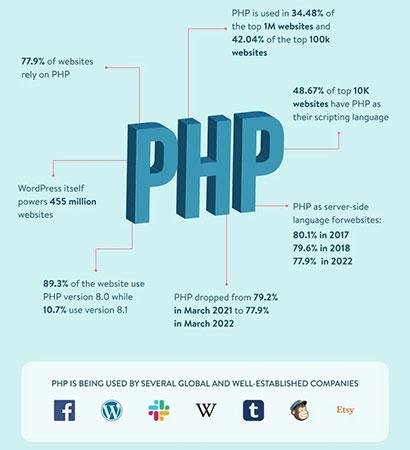
In the fast-evolving world of software development, adhering to best practices while coding is essential for producing maintainable, efficient, and scalable applications. At Jash1t, we take pride in following a disciplined approach to coding, ensuring that our software solutions meet the highest standards of quality. This article explores the most common and effective practices we follow across programming languages, detailing how they contribute to project success and client satisfaction.
1. Write Readable and Maintainable Code
Readable code is essential for seamless collaboration and long-term project sustainability. When code is written clearly and follows consistent guidelines, it becomes easier for teams to onboard new developers, debug issues, and implement updates without misinterpretation or errors.
Key Practices:
- Follow a Consistent Coding Style: Adhering to a consistent style guide for the programming language ensures that the code looks uniform across the project, making it easier for any developer to read and understand.
- Use Meaningful Variable and Function Names: Using descriptive names for variables and functions communicates their purpose at a glance, reducing the need for additional comments or explanations.
- Add Comments Judiciously: Comments should explain why a particular approach was taken, not restate what the code does. They should add value without cluttering the codebase.
- Organize Code into Logical Sections: By dividing code into functions, classes, and modules, developers can compartmentalize functionality and make the codebase more navigable.
Benefits:
Readable and maintainable code enhances teamwork, allows for faster onboarding of new developers, and minimizes errors during updates or debugging.
2. Practice Modular Programming
Modular programming involves breaking down complex systems into smaller, reusable components that can be independently developed, tested, and maintained. This approach not only simplifies the development process but also allows teams to scale projects efficiently and reduce duplication of effort across modules.
Key Practices:
- DRY Principle (Don’t Repeat Yourself): Avoid redundancy by creating reusable functions or components. This reduces the risk of inconsistencies when updates are needed.
- Single Responsibility Principle: Ensure each module or function has one clearly defined purpose. This makes it easier to test, debug, and maintain.
- Encapsulation: Limit the visibility of variables and methods to the areas where they are needed. Encapsulation prevents accidental interference between different parts of the codebase.
Benefits:
Modular programming leads to cleaner, more organized code, making it easier to scale and adapt to new requirements without extensive rewrites.
3. Write Efficient and Performant Code
Writing efficient code ensures optimal use of system resources and delivers fast, reliable application performance. Efficient algorithms, reduced redundancies, and optimized operations enhance user experiences, making applications responsive even under heavy load, critical for modern business needs.
Key Practices:
- Optimize Algorithms: Choose data structures and algorithms that minimize computational complexity and ensure scalability.
- Minimize Redundant Operations: Identify and eliminate unnecessary computations, loops, or database queries to enhance performance.
- Leverage Language Features: Use built-in libraries and functions optimized for performance, which are often faster and more reliable than custom implementations.
- Conduct Performance Testing: Regularly benchmark critical sections of the code to identify and address bottlenecks.
Benefits:
Efficient code results in faster response times, reduced resource consumption, and a better user experience, all of which are critical for modern applications.
4. Ensure Robust Error Handling
Error handling is vital for application reliability. By anticipating and managing exceptions, validating inputs, and providing meaningful feedback, developers can build resilient systems that recover gracefully from issues, minimizing downtime and maintaining user trust.
Key Practices:
- Use Try-Catch Blocks (or Equivalent): Implement error-handling mechanisms to catch exceptions and manage them gracefully without crashing the application.
- Log Errors Effectively: Maintain detailed error logs with timestamps, error codes, and context to facilitate debugging and monitoring.
- Validate Inputs: Implement checks for all user inputs and external data to prevent invalid or malicious data from causing errors or vulnerabilities.
- Fail Gracefully: Provide meaningful error messages to users while masking sensitive system details to maintain security.
Benefits:
Robust error handling improves application stability, reduces downtime, and builds trust with users by ensuring the app handles failures professionally.
5. Adopt Version Control Systems
Version control systems like Git allow teams to manage changes, collaborate effectively, and maintain a history of code evolution. By isolating development work into branches and enforcing peer reviews, these systems ensure quality while streamlining workflows, essential for any modern project.
Key Practices:
- Use Git or Similar Tools: Employ version control systems to track changes, manage branches, and collaborate efficiently on code.
- Follow Commit Guidelines: Write concise, descriptive commit messages that summarize what changes were made and why.
- Create Feature Branches: Isolate work on specific features or bug fixes in dedicated branches to minimize conflicts and streamline merging.
- Perform Code Reviews: Implement peer review processes to ensure that all changes are thoroughly vetted for quality and correctness before integration.
Benefits:
Version control systems facilitate seamless collaboration, allow for easy rollbacks, and improve overall code quality through systematic reviews and historical tracking.
6. Test Code Thoroughly
Testing is a critical part of development that validates code functionality and prevents unexpected failures. From unit to integration tests, comprehensive testing frameworks ensure code reliability, scalability, and adaptability, providing confidence in both current releases and future updates.
Key Practices:
- Unit Testing: Test individual components or functions in isolation to ensure they behave as intended under various conditions.
- Integration Testing: Verify that different modules interact seamlessly and produce the desired outcomes when combined.
- Automated Testing: Leverage tools like Selenium, PyTest, or JUnit to automate repetitive testing tasks, ensuring consistency and efficiency.
- Edge Case Testing: Anticipate rare or extreme conditions and test the code’s ability to handle them without failure.
Benefits:
Thorough testing results in higher reliability, faster identification and resolution of bugs, and reduced risk of new issues being introduced during updates.
7. Document Everything
Good documentation bridges gaps in communication, ensuring developers understand the intent and logic of a codebase. It simplifies maintenance and future enhancements while fostering knowledge sharing among teams, making even the most complex projects easier to navigate and sustain.
Key Practices:
- Code Comments: Use comments to explain the purpose of complex logic or unconventional approaches
- API Documentation: Provide detailed descriptions of endpoints, parameters, expected responses, and error codes for all APIs.
- README Files: Include setup instructions, usage guidelines, and known issues in project directories.
- Knowledge Sharing: Centralize documentation in a shared platform like a wiki or knowledge base to ensure it’s accessible to all stakeholders.
Benefits:
Comprehensive documentation reduces the learning curve for new developers, streamlines maintenance, and fosters better communication with stakeholders.
8. Focus on Security Best Practices
Security is paramount in today’s digital ecosystem. By adhering to secure coding standards, employing encryption, and conducting regular audits, developers safeguard sensitive data and user privacy, ensuring applications comply with regulations and withstand evolving threats.
Key Practices:
- Secure Coding Standards: Follow established guidelines to prevent vulnerabilities like SQL injection, cross-site scripting, and buffer overflows.
- Use Authentication and Authorization Mechanisms: Ensure that sensitive actions and data are protected by robust access control measures.
- Encrypt Sensitive Data: Implement encryption protocols to safeguard data at rest and in transit, reducing the risk of breaches.
- Conduct Security Audits: Perform regular reviews of the codebase to identify and address potential vulnerabilities.
Benefits:
Adhering to security best practices protects sensitive data, ensures compliance with regulations, and builds user trust by safeguarding their information.
9. Continuous Integration and Deployment (CI/CD)
CI/CD automates the building, testing, and deployment of code, streamlining software development workflows. By integrating code changes frequently and deploying updates seamlessly, CI/CD ensures faster releases, improved collaboration, and greater confidence in application stability.
Key Practices:
- Automate Builds and Tests: Use tools like Jenkins, GitHub Actions, or CircleCI to automate repetitive tasks, ensuring consistency and efficiency.
- Implement Deployment Pipelines: Deploy updates seamlessly to staging and production environments, minimizing downtime and manual effort.
- Monitor Performance Post-Deployment: Track performance metrics and user feedback after deployment to ensure stability and identify areas for improvement.
Benefits:
CI/CD pipelines accelerate the delivery of new features, reduce manual intervention, and help detect and resolve integration issues early in the development process.
Conclusion:
At Jash1t, our commitment to coding best practices ensures that we deliver high-quality, maintainable, and secure software solutions. By following these principles across programming languages and projects, we build applications that stand the test of time and meet the evolving needs of our clients. Whether it’s a small utility or a large-scale enterprise system, our disciplined approach to coding is the cornerstone of our success. Let’s collaborate to turn your ideas into reliable and impactful software.










